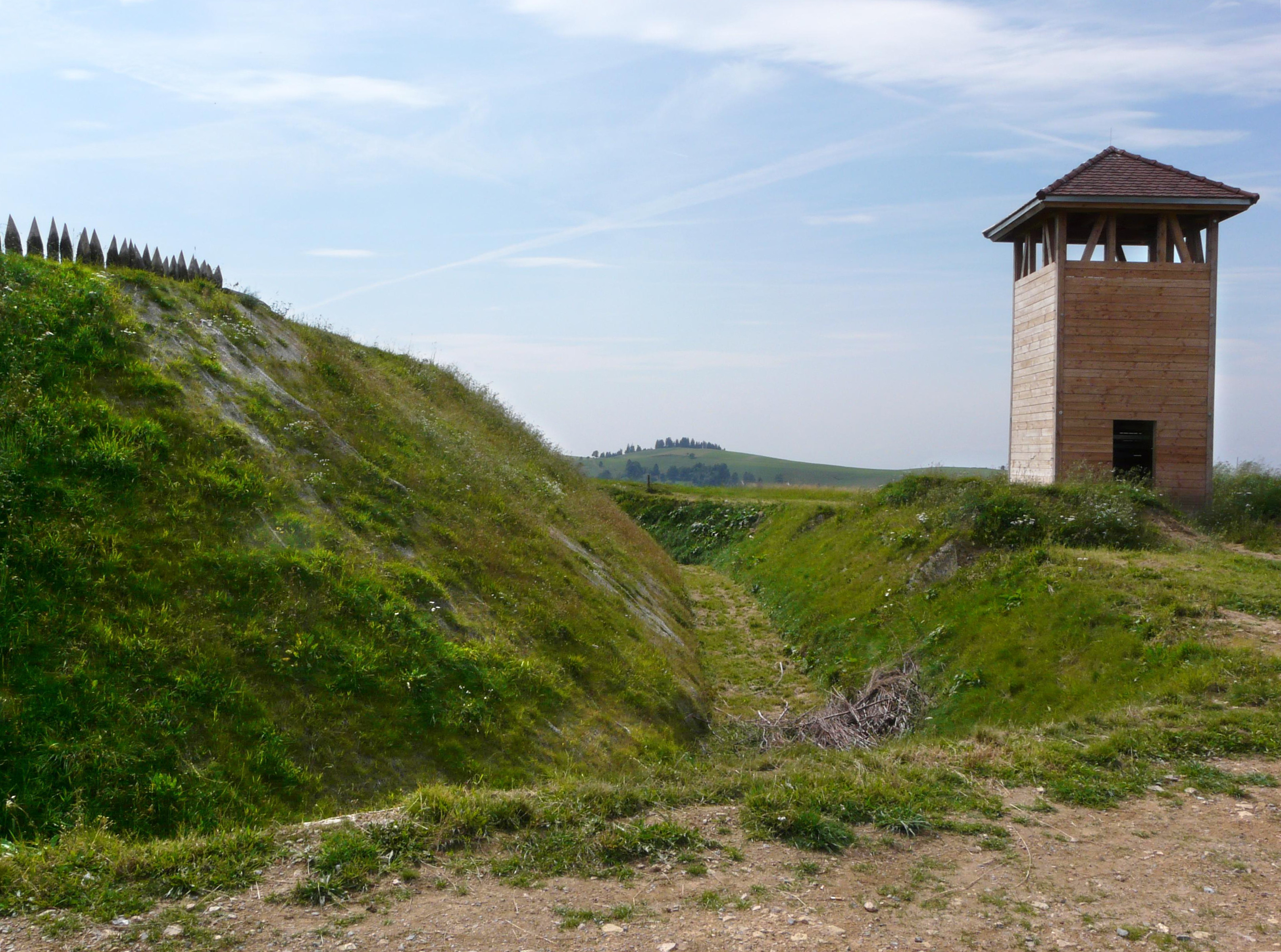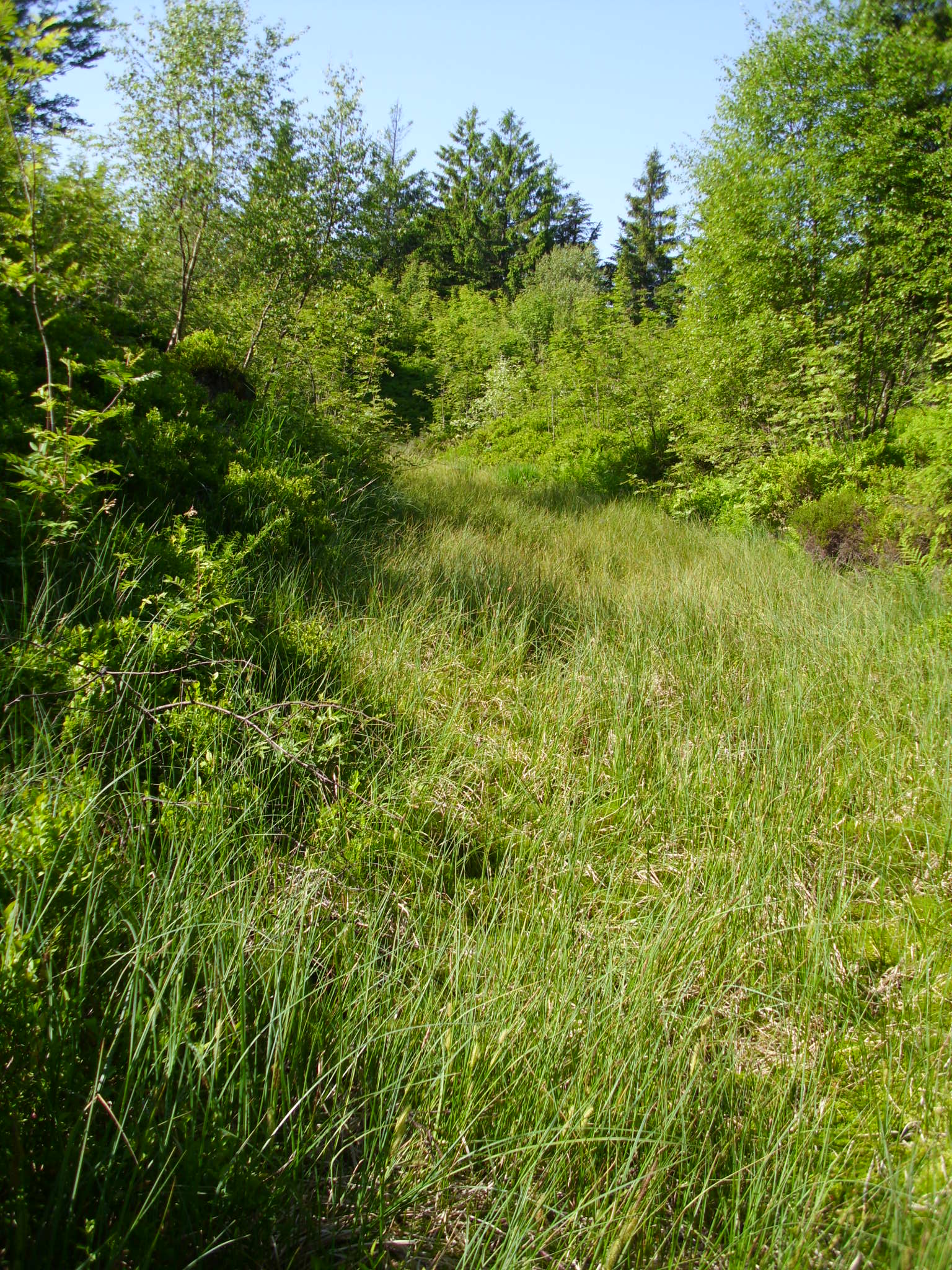|
Schwedenschanze (Zuflucht)
The Schwedenschanze (Zuflucht) is a former schanze in Bad Peterstal-Griesbach in the Black Forest in Southern Germany. It is located on the L 402, the "Oppenauer Steige", which branches off from the B 500 ( Black Forest High Road). Another redoubt which is geographically close to the Schwedenschanze is the Röschenschanze. Etymology The name ''Schwedenschanze'' (literally 'Swedish redoubt') dates back to Swedish troops as erectors. Many redoubts from this time carry this name. ''Zuflucht'' is a village which belongs to the municipality Bad Peterstal-Griesbach. History The Schwedenschanze was built during the Thirty Years' War in 1632/1633 and is the oldest schanze on the top of the pass at the Zuflucht. It consisted of a square with bulwarks at the corners and was designed for a crew of 400 to 500 men. It was supposed to secure the Oppenauer Steige from above, but it was unfavorably laid out because the opponent could approach the hill unseen due to the surrounding fo ... [...More Info...] [...Related Items...] OR: [Wikipedia] [Google] [Baidu] |
Baden-Württemberg
Baden-Württemberg ( ; ), commonly shortened to BW or BaWü, is a states of Germany, German state () in Southwest Germany, east of the Rhine, which forms the southern part of Germany's western border with France. With more than 11.07 million inhabitants across a total area of nearly , it is the third-largest German state by both List of German states by area, area (behind Bavaria and Lower Saxony) and List of German states by population, population (behind North Rhine-Westphalia and Bavaria). The List of cities in Baden-Württemberg by population, largest city in Baden-Württemberg is the state capital of Stuttgart, followed by Mannheim and Karlsruhe. Other major cities are Freiburg im Breisgau, Heidelberg, Heilbronn, Konstanz, Pforzheim, Reutlingen, Tübingen, and Ulm. Modern Baden-Württemberg includes the historical territories of Baden, Prussian Province of Hohenzollern, Hohenzollern, and Württemberg. Baden-Württemberg became a state of West Germany in April 1952 through ... [...More Info...] [...Related Items...] OR: [Wikipedia] [Google] [Baidu] |
Germany
Germany, officially the Federal Republic of Germany, is a country in Central Europe. It lies between the Baltic Sea and the North Sea to the north and the Alps to the south. Its sixteen States of Germany, constituent states have a total population of over 84 million in an area of , making it the most populous member state of the European Union. It borders Denmark to the north, Poland and the Czech Republic to the east, Austria and Switzerland to the south, and France, Luxembourg, Belgium, and the Netherlands to the west. The Capital of Germany, nation's capital and List of cities in Germany by population, most populous city is Berlin and its main financial centre is Frankfurt; the largest urban area is the Ruhr. Settlement in the territory of modern Germany began in the Lower Paleolithic, with various tribes inhabiting it from the Neolithic onward, chiefly the Celts. Various Germanic peoples, Germanic tribes have inhabited the northern parts of modern Germany since classical ... [...More Info...] [...Related Items...] OR: [Wikipedia] [Google] [Baidu] |
Schanze
A ''schanze'' () is, according to the specialist terminology of German fortification construction, an independent fieldwork that is frequently used in the construction of temporary (not permanent) field fortifications.Rüstow: ''Militärisches Handwörterbuch.'' 1859, s.v. Schanze The word is German and has no direct English equivalent, although the word sconce is derived from Dutch ''schans'', which is cognate to the German word. In everyday German speech, however, it is commonplace to refer to permanent fortifications as ''Schanzen'', because in many places in times of war, fieldworks that were only temporarily thrown up were later turned into permanent fortifications. Derivation The word ''Schanze'' derives originally from the fact that, during sieges in the Late Middle Ages, temporary defensive positions had frequently been built out of gabions, known in German as ''Schanzkörbe''.Duden: ''Herkunftswörterbuch.'' under ''Schanze'' Later such ''Schanzen'' very often consis ... [...More Info...] [...Related Items...] OR: [Wikipedia] [Google] [Baidu] |
Bad Peterstal-Griesbach
Bad Peterstal-Griesbach () is a municipality in the district of Ortenau in Baden-Württemberg in Germany. Matthias Erzberger was murdered here on August 26, 1921, for signing the 1918 Armistice for the German Empire. Two former military fortifications are located in ''Zuflucht'', a village in Bad Peterstal-Griesbach: the Schwedenschanze (Zuflucht) and the Röschenschanze. They are two of the many military protection forces in the history of the Black Forest, which were created since the Thirty Years' War (1618–1648) mainly to repel French troops. See also * Black Forest The Black Forest ( ) is a large forested mountain range in the States of Germany, state of Baden-Württemberg in southwest Germany, bounded by the Rhine Valley to the west and south and close to the borders with France and Switzerland. It is th ... References External links * Relief map of the Schwedenschanze and the Röschenschanze Ortenaukreis Spa towns in Germany {{Ortenaukreis-g ... [...More Info...] [...Related Items...] OR: [Wikipedia] [Google] [Baidu] |
Black Forest
The Black Forest ( ) is a large forested mountain range in the States of Germany, state of Baden-Württemberg in southwest Germany, bounded by the Rhine Valley to the west and south and close to the borders with France and Switzerland. It is the source of the Danube and Neckar rivers. Its highest peak is the Feldberg (Black Forest), Feldberg with an elevation of above sea level. Roughly oblong in shape, with a length of and breadth of up to , it has an area of about . Historically, the area was known for forestry and the mining of ore deposits, but tourism has now become the primary industry, accounting for around 300,000 jobs. There are Baroque fortifications in the Black Forest, several ruined military fortifications dating back to the 17th century. History In ancient times, the Black Forest was known as , after the Celtic deity, Abnoba. In Roman times (Late antiquity), it was given the name ("Marcynian Forest", from the Germanic word ''marka'', "border"). The Black ... [...More Info...] [...Related Items...] OR: [Wikipedia] [Google] [Baidu] |
Schwarzwaldhochstraße
The Schwarzwaldhochstraße or ''Black Forest High Road'' is the oldest and one of the best known themed drives in Germany. It is a part of the B 500 federal highway and leads over 60 km from Baden-Baden to Freudenstadt. Route description The ''Schwarzwaldhochstraße'' begins in Baden-Baden and rises quickly to the main ridge of the northern Black Forest, reaching the top at the Bühlerhöhe. At the top is a luxury hotel, also named "Bühlerhöhe". A small chapel with notable stained glass windows, known locally as the Adenau Church (''Adenauerkirche''), sits perched on an outcrop on the heights. When the weather is clear, there is a wide view over the Rhine plain toward the Vosges. From the Bühlerhöhe, the Hochstraße runs at an altitude of between 800 and 1,000 metres above sea level past several highland hotels (Plättig, Sand, Hundseck, Unterstmatt, Mummelsee, Ruhestein, Schliffkopf). At one of the several ski areas along the route, on the Mehliskopf near Sand, is a ... [...More Info...] [...Related Items...] OR: [Wikipedia] [Google] [Baidu] |
Röschenschanze
The Röschenschanze is a former schanze in Bad Peterstal-Griesbach in the Black Forest in Southern Germany. It is located on the L 402, the "Oppenauer Steige", which branches off from the B 500 ( Black Forest High Road). Another redoubt which is geographically close to the Röschenschanze is the Schwedenschanze (Zuflucht). Etymology The schanze is named after the Württemberg Major (1743–1841). Rösch became known in particular for his teaching activities at the military plant school and for the construction of the Röschenschanze. The Röschenschanze is also known as ''Schwabenschanze'' (literally 'Swabian redoubt'). History The Röschenschanze was created as part of the coalition wars of the German princes against France. It was supposed to stop the French troops coming from the Renchtal under General Moreau. In 1794, Rösch was entrusted with the construction of a hexagonal star-shaped schanze with six bulwarks to defend the Württemberg state border. The Rösch ... [...More Info...] [...Related Items...] OR: [Wikipedia] [Google] [Baidu] |
Schwedenschanze Zuflucht Grundriss
There are numerous prehistorical and early historical ringworks and fortification ramparts in Central Europe that have erroneously, usually colloquially, been given the name Schwedenschanze, which means "Swedish redoubt", a ''schanze'' being a hastily erected, military fieldwork. History This name arose in connexion with the fighting during the Thirty Years' War, when the population of the Holy Roman Empire often used old field fortifications as refuge castles or hidden livestock pens. Particularly in Catholic areas this action was taken to protect people from the Protestant forces of the Swedish king, Gustavus II Adolphus. Whether the individual fortifications were actually used as fighting positions, however, is usually speculative. Many of the often well preserved earthworks (fortification), earthworks in the forests of Europe were probably later associated wrongly with this religious war. The history of these heritage sites often goes back several thousand years. They wer ... [...More Info...] [...Related Items...] OR: [Wikipedia] [Google] [Baidu] |
Thirty Years' War
The Thirty Years' War, fought primarily in Central Europe between 1618 and 1648, was one of the most destructive conflicts in History of Europe, European history. An estimated 4.5 to 8 million soldiers and civilians died from battle, famine, or disease, while parts of Germany reported population declines of over 50%. Related conflicts include the Eighty Years' War, the War of the Mantuan Succession, the Franco-Spanish War (1635–1659), Franco-Spanish War, the Torstenson War, the Dutch-Portuguese War, and the Portuguese Restoration War. The war had its origins in the 16th-century Reformation, which led to religious conflict within the Holy Roman Empire. The 1555 Peace of Augsburg attempted to resolve this by dividing the Empire into Catholic and Lutheran states, but the settlement was destabilised by the subsequent expansion of Protestantism beyond these boundaries. Combined with differences over the limits of imperial authority, religion was thus an important factor in star ... [...More Info...] [...Related Items...] OR: [Wikipedia] [Google] [Baidu] |
Strasbourg Bishops' War
The Strasbourg Bishops' War (German: ''Bischöflicher Krieg'' or ''Straßburger Kapitelstreit'';Gerhard Taddey: ''Straßburger Kapitelstreit''. In: Gerhard Taddey (ed.): ''Lexikon der deutschen Geschichte. Personen, Ereignisse, Institutionen. Von der Zeitwende bis zum Ausgang des 2. Weltkrieges.'' 2., überarbeitete Auflage. Kröner, Stuttgart 1983, , p. 1204f. ; ) (1592–1604) was a conflict between Catholics and Protestants for control of the Bishopric of Strasbourg. It was one of only two sectarian or confessional conflicts, both highly localised, that occurred within the Holy Roman Empire between the Peace of Augsburg (1555) and the outbreak of the Thirty Years' War (1618). It was less bloody than the Cologne War (1583–88). It coincided with the Counter-Reformation and the Spanish Winter (1598–99), and the Catholic victory caused Protestants in Germany great worry that the tide had turned decidedly against them. Background The emergence of the Lutheran and Calvinist doc ... [...More Info...] [...Related Items...] OR: [Wikipedia] [Google] [Baidu] |



